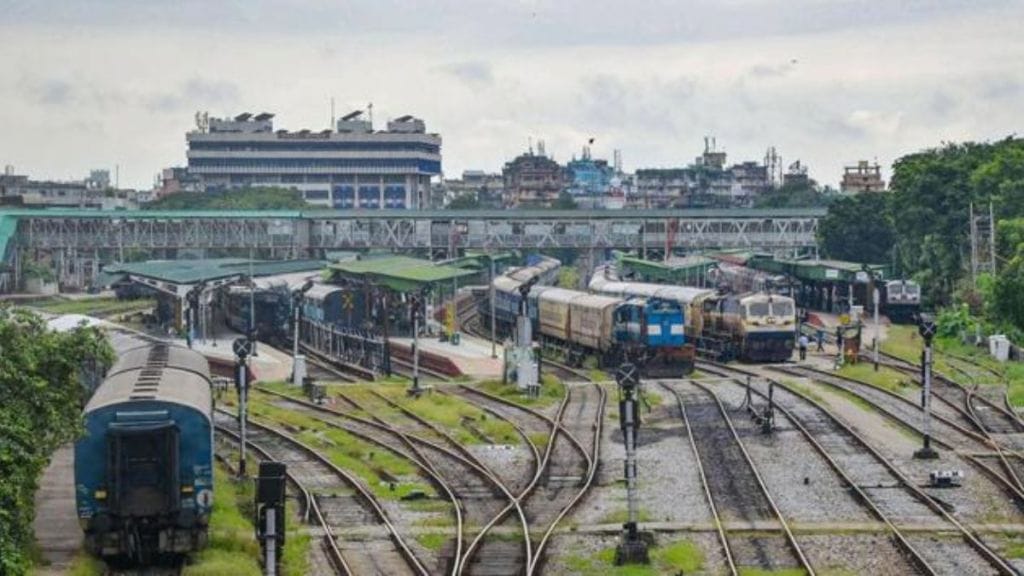Indian Railways has implemented a series of safety measures over the years that have significantly enhanced train operation safety, as demonstrated by the trend in accident statistics. The data clearly shows a dramatic reduction in consequential train accidents, dropping from 473 in 2000-01 to just 48 in 2022-23. Another set of data shows that consequential train accidents decreased from 1,711 (an average of 171 per year) between 2004 and 2014 to 678 (an average of 68 per year) from 2014 to 2024.
This impressive decline underscores the Indian Railways’ unwavering commitment to safety, reflected in its substantial investments in technology and infrastructure. The Railway Ministry has consistently led efforts to adopt and implement rigorous safety protocols to protect both operations and passengers. Here’s a closer look at the key safety measures adopted to ensure the secure and efficient operation of trains.
Rashtriya Rail Sanraksha Kosh
The Rashtriya Rail Sanraksha Kosh (RRSK), established in 2017-18, was designed to replace, renew, and upgrade critical safety assets with a budget of Rs 1 lakh crore over five years, concluding in 2021-22. In 2022-23, the government extended RRSK for another five years with an additional Gross Budgetary Support (GBS) of Rs 45,000 crore.
Electronic Interlocking Systems
As of June 30, 2024, the installation of Electrical/Electronic Interlocking Systems at 6,589 stations has centralized the operation of points and signals, reducing accidents caused by human error. Similarly, interlocking has been implemented at 11,048 level crossing gates to improve safety at these locations. Complete Track Circuiting, which verifies track occupancy through electrical means, has been rolled out at 6,609 stations.
Kavach system
The Kavach Automatic Train Protection (ATP) system, developed in India, assists loco pilots by automatically applying brakes if necessary and ensures safe operation in adverse weather. Since its adoption as the National ATP system in July 2020, Kavach has been deployed over 1,465 Route km and on 144 locomotives. The latest Kavach 4.0 specification was approved by the Research Designs and Standards Organisation (RDSO) on July 16, 2024. By July 24, 2024, Rs1,216.77 crore had been invested in Kavach, with an additional Rs 1,112.57 crore allocated for 2024-25.
Enhanced communication systems
Axle counters for Automatic Block Section Clearance (BPAC) have been installed on 6,079 Block Sections to ensure trains complete their arrival checks without manual intervention. A Long-Term Evolution (LTE) based Mobile Train Radio Communication system has been approved for 34,803 Route Kilometers across Indian Railways.
Emergency talk-back systems and alarm systems are now standard in Vande Bharat train sets, and CCTV cameras have been installed in all Vande Bharat Express coaches, with more than 9,572 coaches equipped as of July 24, 2024. Vigilance Control Devices (VCD) are fitted in all locomotives to enhance pilot alertness, while GPS-based Fog Safety Devices (FSD) aid loco pilots in fog-prone areas by helping them gauge distances to key landmarks.
Ultrasonic testing and preventive maintenance
Ultrasonic Flaw Detection (USFD) testing is regularly conducted to identify and replace defective rails. Preventive maintenance is carried out on railway assets such as coaches and wagons to ensure safe operations.
A web-based online monitoring system for track assets, including a track database and decision support system, helps optimize maintenance needs. Detailed safety instructions for track issues, integrated block procedures, worksite safety, and monsoon precautions are in place.
Unmanned level crossings and bridge safety
All unmanned level crossings (UMLCs) on Broad Gauge (BG) routes were eliminated by January 2019, and the safety of railway bridges is ensured through regular inspections and necessary repairs.
Indian Railways also displays statutory “Fire Notices” in all coaches to educate passengers on fire prevention, including prohibitions on inflammable materials and smoking. New Power Cars and Pantry Cars are equipped with Fire Detection and Suppression Systems, with ongoing retrofitting in existing coaches.


